Biology (Anatomy & Physiology 1-2) || Chemistry (General & Organic)
I know how busy pre-meds/nursing majors are, so I hope my page helps make school a little less stressful!
* All lab reports I have posted include grades received/any helpful notes. Work is shown, step by step, making it is easy to follow!
* Please feel free to let me know if there are any updates I need to make for future students =)
- 28
- 0
- 1
Community
- Followers
- Following
61 Reviews received
31 items
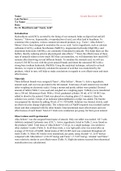
Lab Report 12. CHEM 106. Heartburn and Aunty Acid
Lab Report 12 -- Heartburn and Aunty Acid. CUNY- Hunter College. CHEM 106. Complete lab. All correct calculations included, in a step by step manner. Sample calculations are easy to follow to help you sub in your numbers and create your own table =)
- Package deal
- Other
- • 6 pages •
Lab Report 12 -- Heartburn and Aunty Acid. CUNY- Hunter College. CHEM 106. Complete lab. All correct calculations included, in a step by step manner. Sample calculations are easy to follow to help you sub in your numbers and create your own table =)
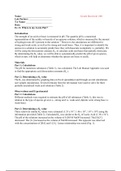
Lab Report 11. CHEM 106. Hunter College. Where is my lewis pair?
Lab Report 11: Where is my lewis pair - Acids, Bases, and Ka. CUNY - Hunter College. All correct answers with detailed calculations. Done step by step.
- Package deal
- Other
- • 7 pages •
Lab Report 11: Where is my lewis pair - Acids, Bases, and Ka. CUNY - Hunter College. All correct answers with detailed calculations. Done step by step.
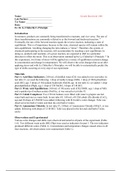
Lab Report 10. CHEM 106. Hunter College. CUNY. Le Châterlier’s Principle
Completed Lab Report 10. Le Châterlier’s Principle, Where do I shift? CHEM 106. Hunter College. CUNY. Includes detailed table describing color changes after each experimental step and explanation to changes (shifts to the right or left). Detailed answers to post lab questions as well, with written equations.
- Package deal
- Other
- • 7 pages •
Completed Lab Report 10. Le Châterlier’s Principle, Where do I shift? CHEM 106. Hunter College. CUNY. Includes detailed table describing color changes after each experimental step and explanation to changes (shifts to the right or left). Detailed answers to post lab questions as well, with written equations.
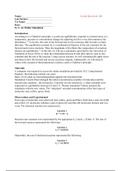
CHEM 106. Lab Report 9. Hunter College -- CUNY. An Online Simulation.
Complete Lab with Answers/Calculations/ and Tables/Figures. Hunter College -- CUNY. Lab 9: An Online Simulation
- Package deal
- Other
- • 9 pages •
Complete Lab with Answers/Calculations/ and Tables/Figures. Hunter College -- CUNY. Lab 9: An Online Simulation
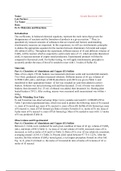
Lab Report 8. CHEM 106. Molecules and Reactions. Foiled Again. Hunter College
Completed Lab 8 -- Hunter College -- CUNY. Chem 106. General Chemistry lab.
- Package deal
- Other
- • 9 pages •
Completed Lab 8 -- Hunter College -- CUNY. Chem 106. General Chemistry lab.
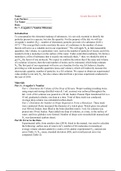
Lab Report 7. CHEM 106. Hunter College. Avogadro's Number Dilemma
Correct answers provided and detailed calculations.
- Package deal
- Other
- • 7 pages •
Correct answers provided and detailed calculations.
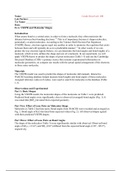
CHEM 106. Lab Report 6. VSEPR and Molecular Shapes
Entire lab report with correct answers and figures. Appendix includes table with all expected geometry, bond angles, observed geometry and observed bond angles (including simulation images).
- Package deal
- Other
- • 6 pages •
Entire lab report with correct answers and figures. Appendix includes table with all expected geometry, bond angles, observed geometry and observed bond angles (including simulation images).
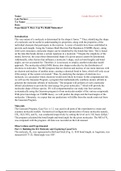
Lab Report 5. CHEM 106. How Can We Build Molecules?
How Can We Build Molecules? In experiment 5, using a Gaussian program, molecular models of the various compounds will be formed. With prior knowledge on VSEPR theory, the shape and the bond angles of the molecules will be predicted.
- Package deal
- Other
- • 7 pages •
How Can We Build Molecules? In experiment 5, using a Gaussian program, molecular models of the various compounds will be formed. With prior knowledge on VSEPR theory, the shape and the bond angles of the molecules will be predicted.

CHEM 106. Lab Report 4. What is in my sample?
What is in my sample? Color reactions of known samples of cations (Ag , Pb2 , Hg2 2 , Bi3 , Cu2 , and Fe3 ) will be observed to determine the cations in an unknown sample. Reagents, such HCl, Nitric acid, Ammonia, Potassium iodide, thioacetamide, and hydrogen peroxide will be used.
- Package deal
- Other
- • 6 pages •
What is in my sample? Color reactions of known samples of cations (Ag , Pb2 , Hg2 2 , Bi3 , Cu2 , and Fe3 ) will be observed to determine the cations in an unknown sample. Reagents, such HCl, Nitric acid, Ammonia, Potassium iodide, thioacetamide, and hydrogen peroxide will be used.

CHEM 106. Lab Report 3. Up in the Air
Lab Report 3, Up in the Air, is based on a literature review. Study region is selected using New Jersey's Air Monitoring Station Report to observe patterns of ozone, nitric oxide, nitrogen dioxide levels.
- Package deal
- Other
- • 4 pages •
Lab Report 3, Up in the Air, is based on a literature review. Study region is selected using New Jersey's Air Monitoring Station Report to observe patterns of ozone, nitric oxide, nitrogen dioxide levels.

CHEM 223. Lab Report 5 - Identification of an Unknown Mixture (TLC) & Separation (Acid-Base Extraction). Hunter College.
CHEM 223 Lab Report 2 - Recrystallization. Hunter College.
Lab Report 14. CHEM 106. Acids and Bases are pHun. Hunter College.
Lab Report 17 - CHEM 106. Hunter College. Calorimetry and Thermochemistry.
Lab Report 13. CHEM 106. I am a little buffer. Hunter College.